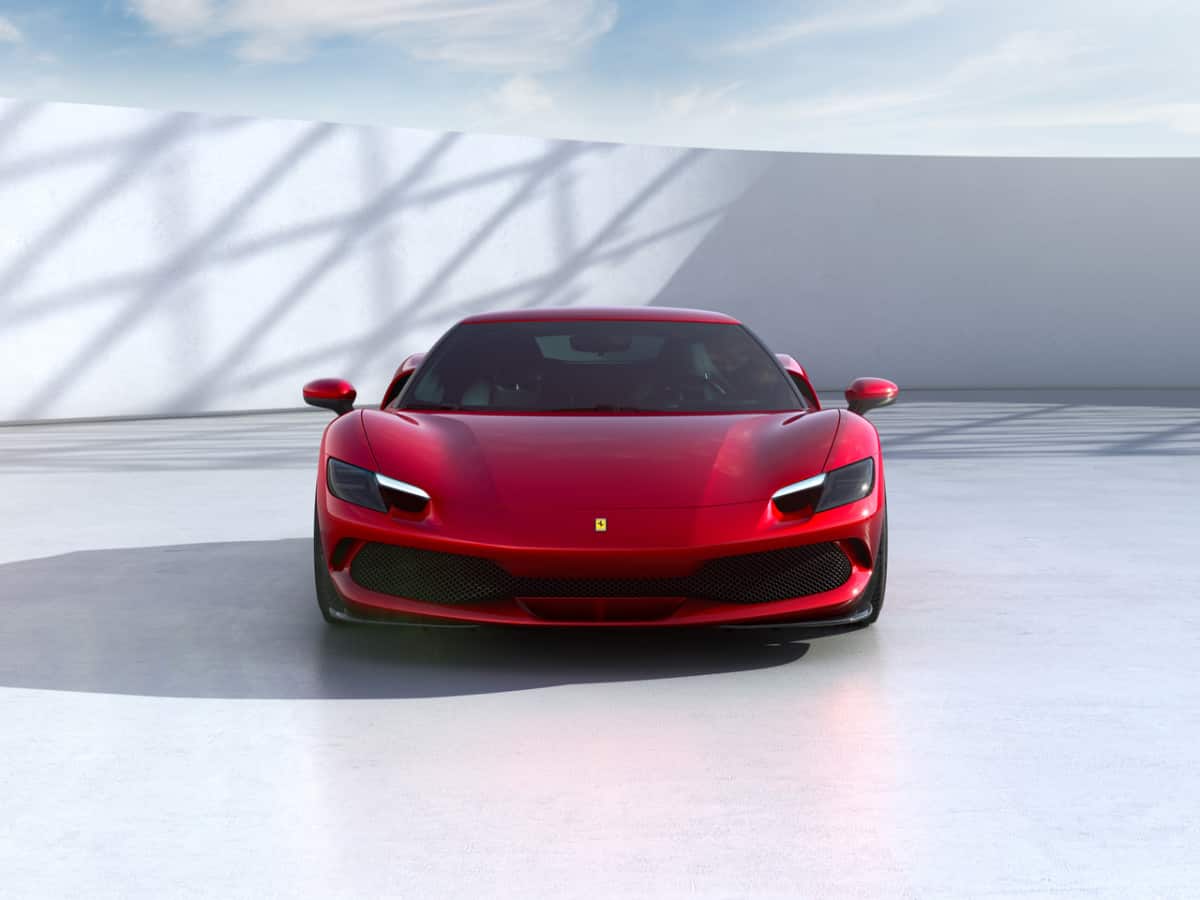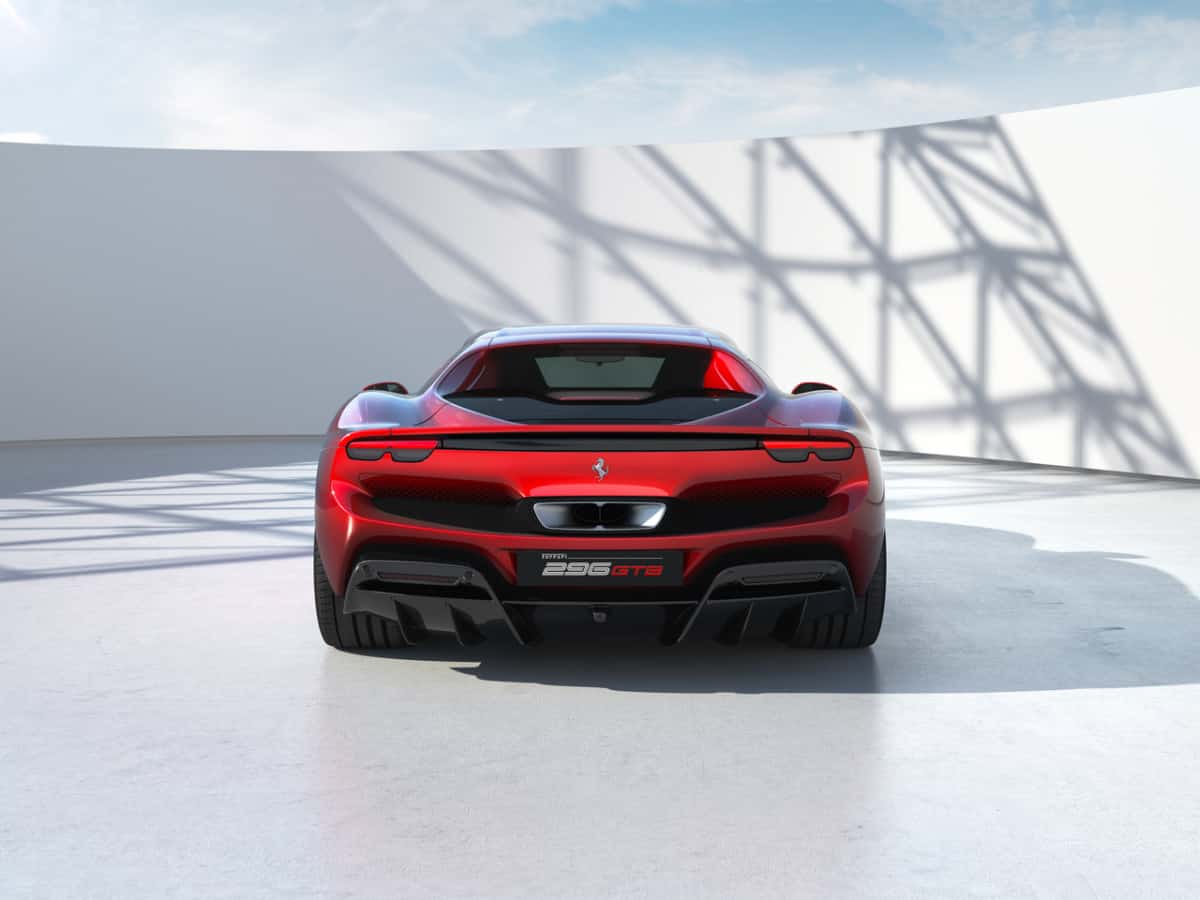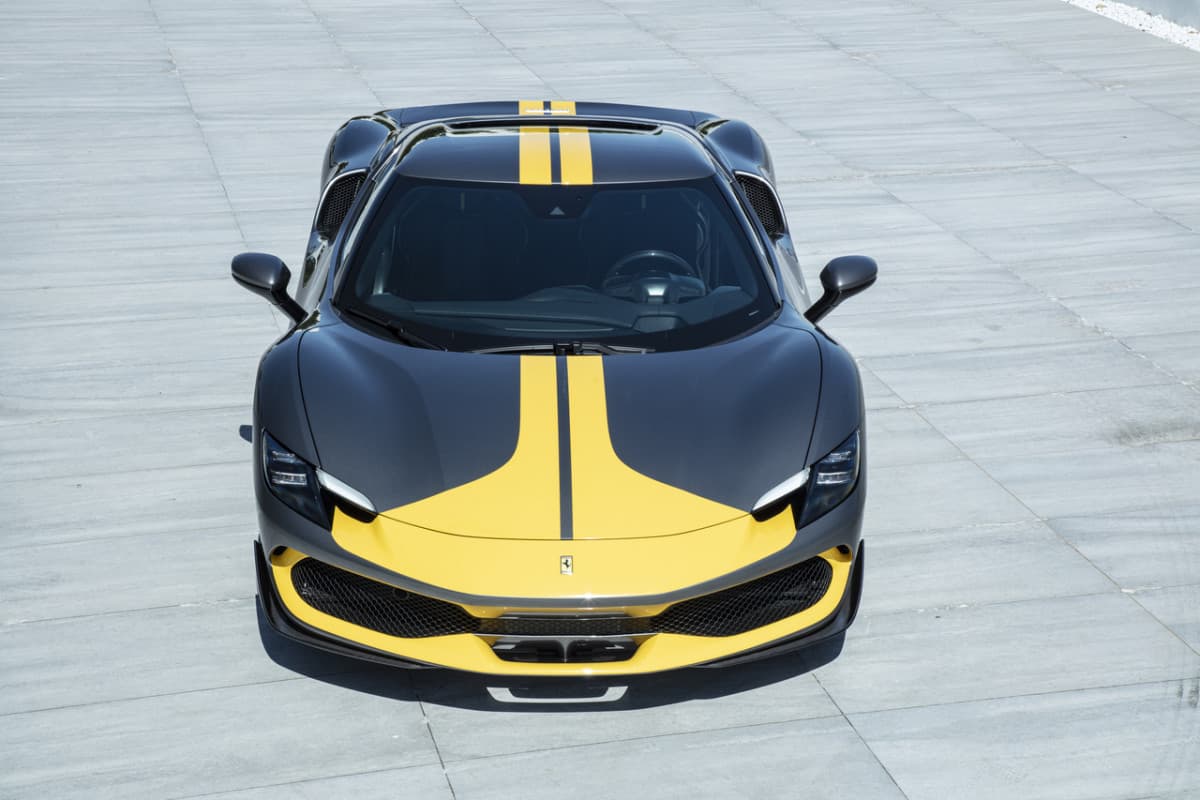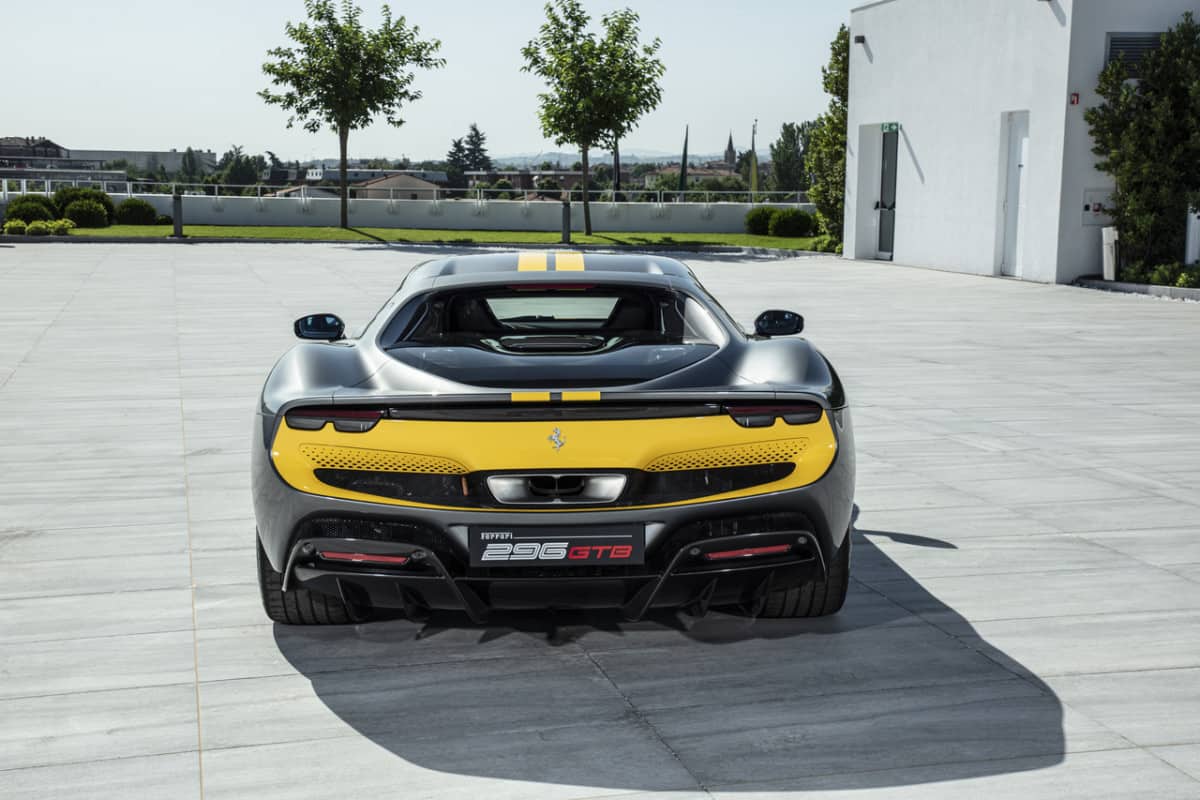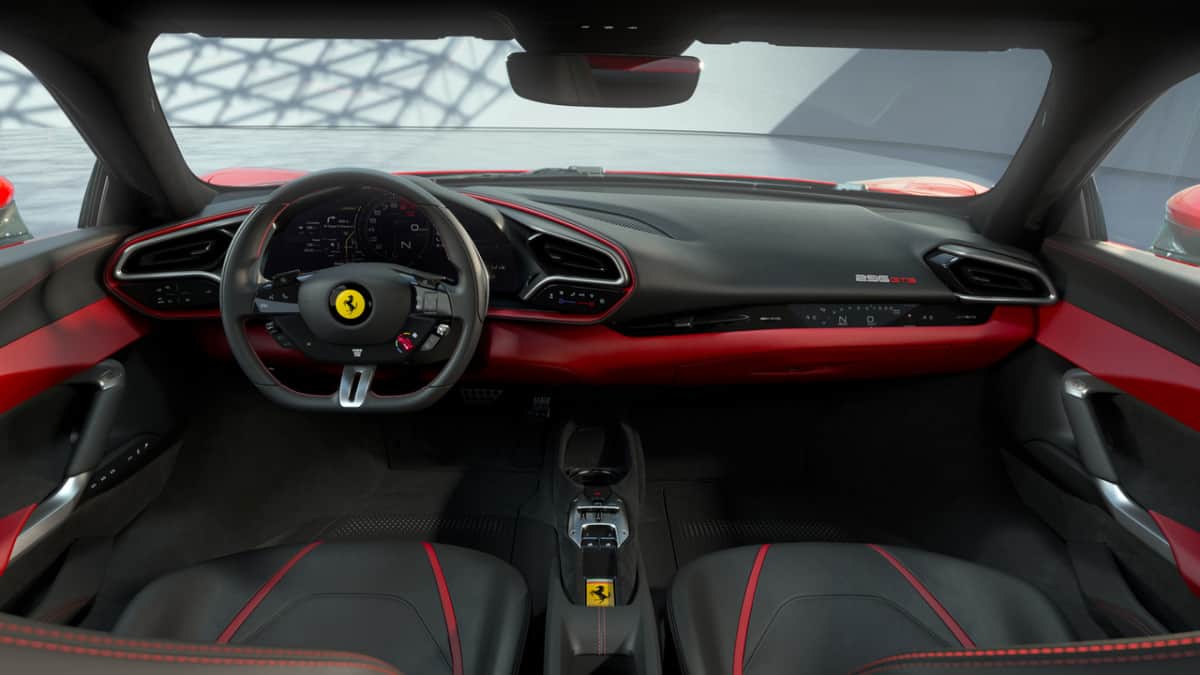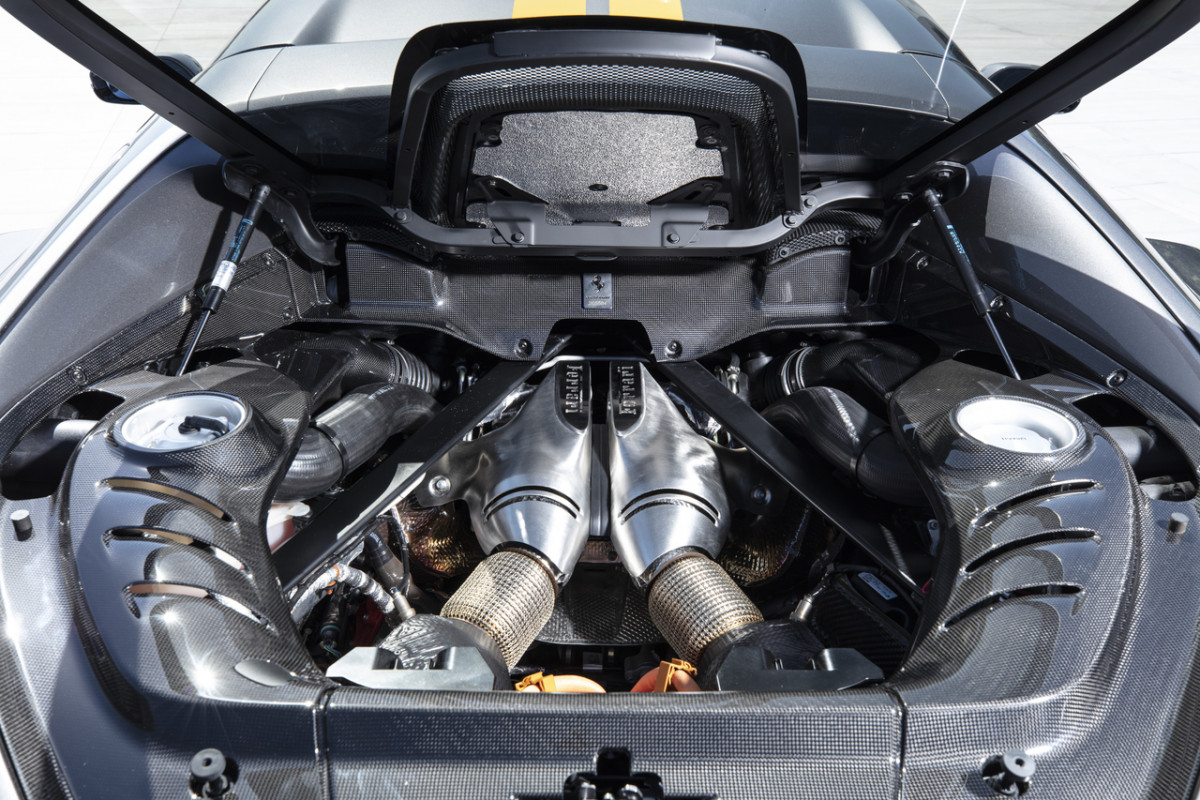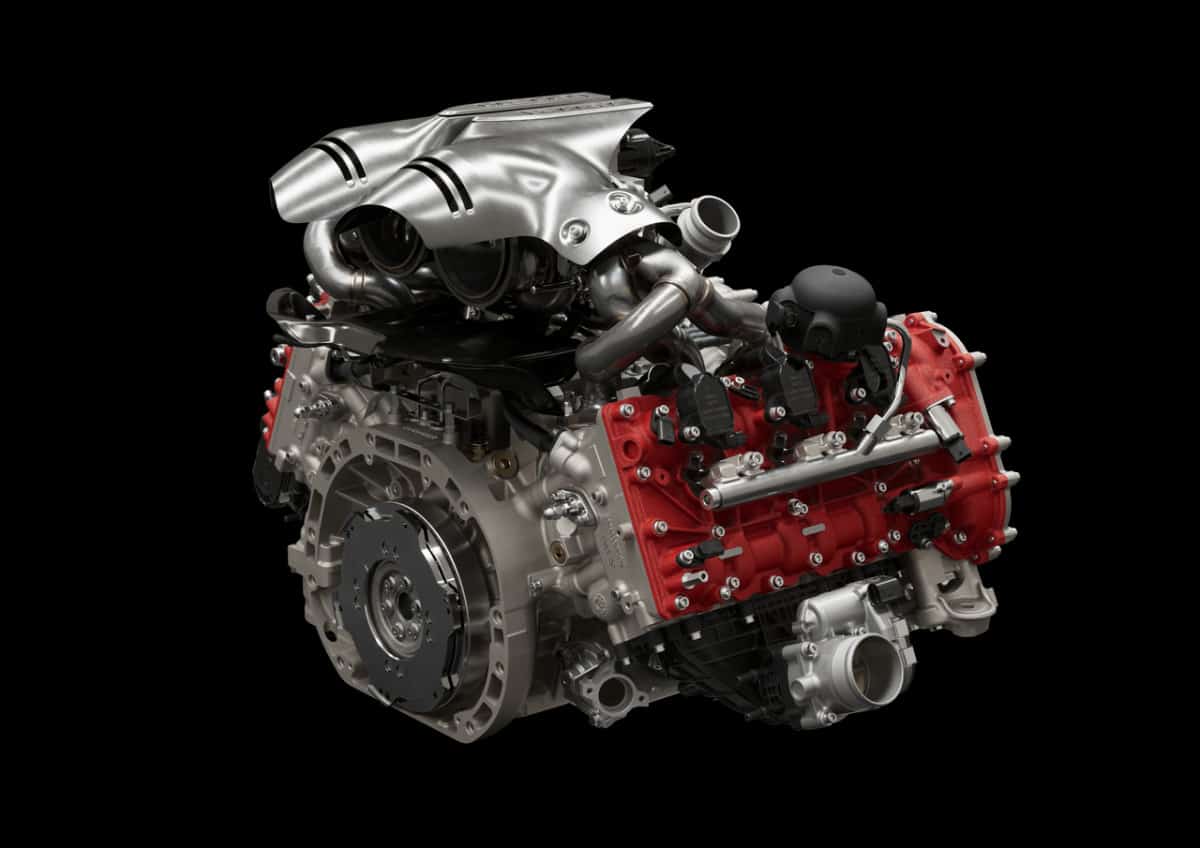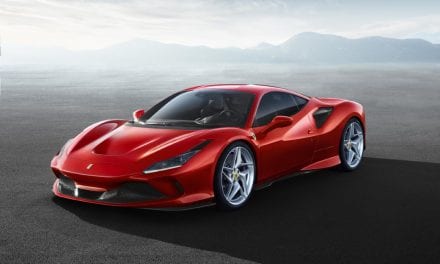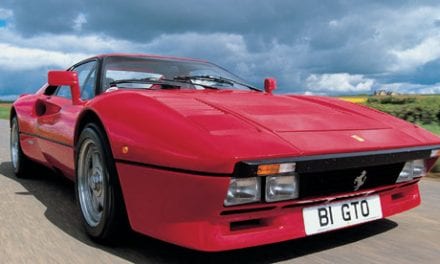At the time of launch, the Ferrari 296 GTB caused quite a stir. Carbon emissions targets are pushing all manufacturers to smaller and hybrid engines, and this was the first Ferrari with a V6 engine. Many were concerned that this was a replacement for the much loved Ferrari F8 Tributo, and that would be prematurely ended. But don’t worry.
The Ferrari 296 GTB does not replace the Ferrari F8 Tributo, and the new car is creating a new segment for Ferrari. Both cars are still made side by side and will continue to do so into 2023. However, the F8 Tributo is unlikely to be replaced when production comes to an end in 2023 or 2024.
The sad thing is though that the Ferrari F8 Tributo is unlikely to have a direct replacement, with any subsequent replacement requiring a hybrid unit to meet new legislation. But that’s not all bad, and as we will show you below. Progress can actually be a good thing.
Comparison of Ferrari 296 GTB vs Ferrari F8 Tributo
Engine & Powerplant
At first glance, the F8 Tributo easily wins since it has a 3.9L Twin Turbo V8 engine. I mean it doesn’t get much more legendary that that! In comparison, the 296 GTB has a relatively puny-sounding 3.0L Twin Turbo V6 engine. Yes, two cylinders less and a whole 0.9L less in capacity.
And yes, you read that right. The Ferrari 296 GTB has a V6 engine and is the first V6 car ever to be sold by Ferrari. Before some of you start jumping around in anger trying to tell me about the V6 Dino, don’t forget that the Dino was never badged as a Ferrari, and was the brainchild of Enzo’s son who sadly passed away.
But what makes the 296 GTB special is that the car also comes with an electric motor delivering extra power when it’s needed. So with this in the mix, the Ferrari 296 GTB delivers 830 CV of power compared to the F8 Tributo’s 720 CV. The smaller car delivers more power overall and is a classic case of do not judge a book by the cover.
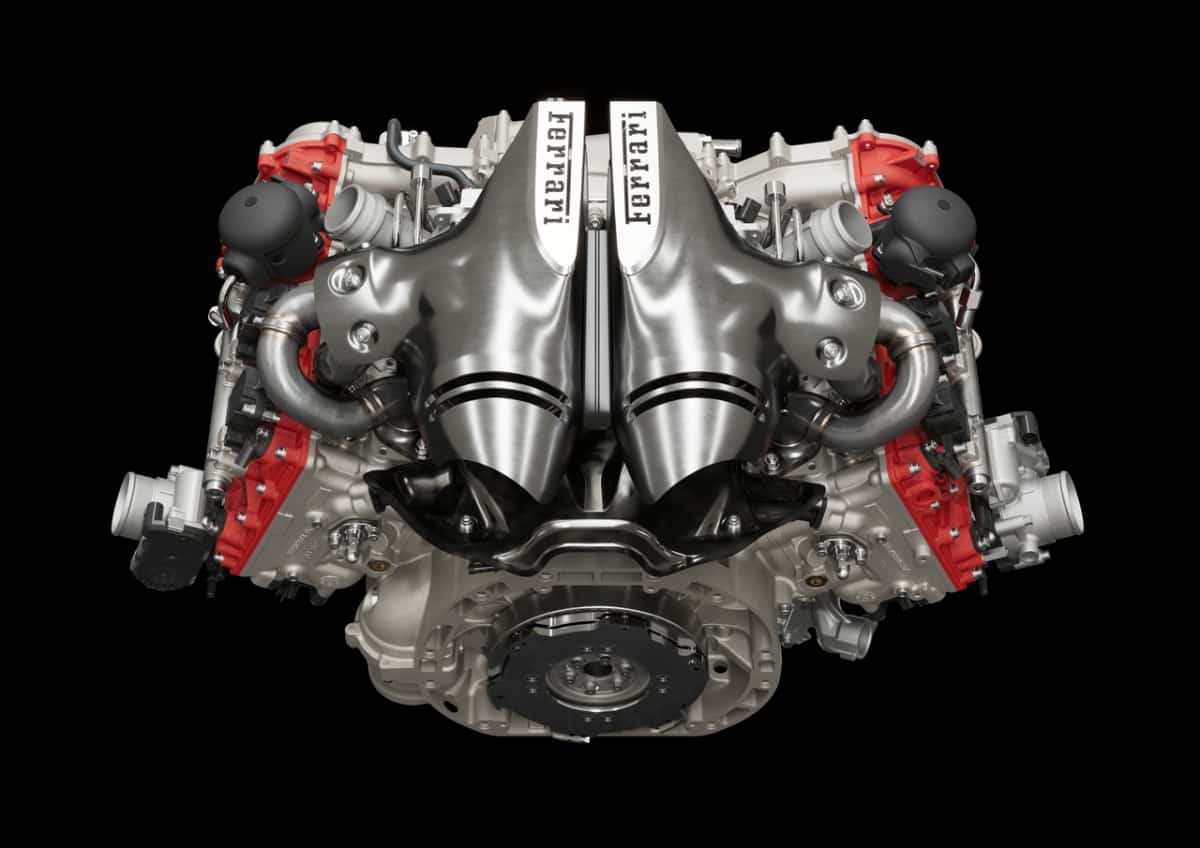
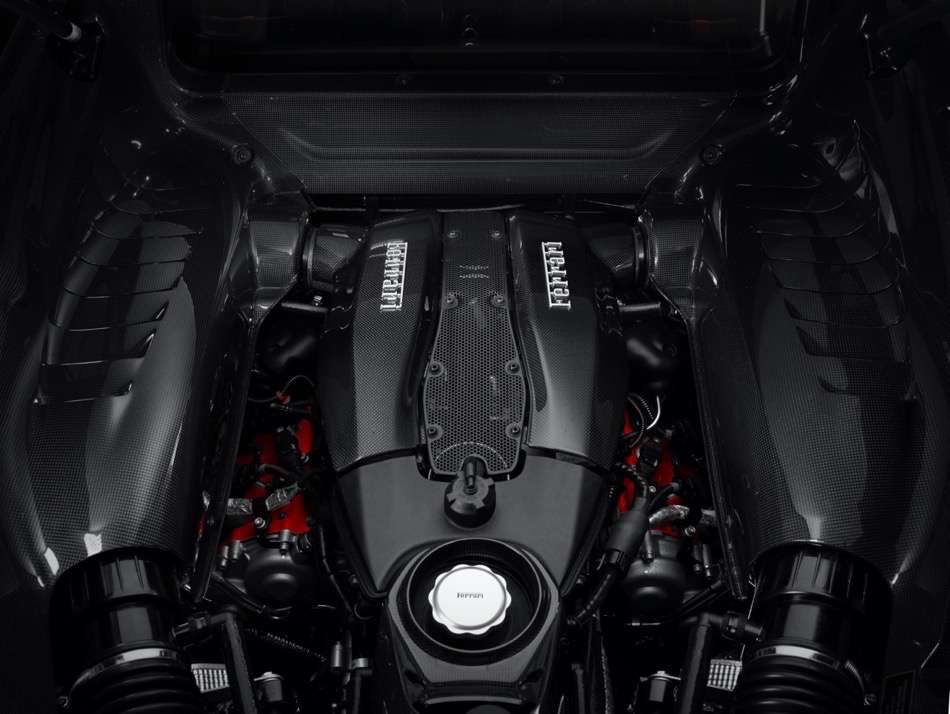
Dimensions & Weight
So we have already seen that the Ferrari 296 GTB has the more powerful powerplant, but surely the batteries add bulk and weight. A faster engine means nothing if the overall weight is compromised.
Well the Ferrari F8 Tributo is 4,611mm long and 1979mm wide, against the Ferrari 296 GTB’s 4,565mm length and 1,958mm width. So at first glance, the F8 Tributo has the biggest footprint.
But you might say that the Ferrari 296 GTB will be heavier as it is, weighed down by motors, electrics and batteries which we know can add considerable weight. However, some of this weight is offset by the removal of two cylinders from the engine, so the difference may not be as much as you think.
The Ferrari 296 GTB has a dry weight of 1,470 kg against the F8 Tributo which tips the scales at 1,330 kg. This gives the 296 GTB a power-to-weight ratio of 0.56 CV per kg, while the F8 Tributo manages 0.54 CV per kg.
Despite the extra weight, the Ferrari 296 GTB delivered more power per kg when compared to the F8 Tributo. Pretty impressive for a smaller engined car.
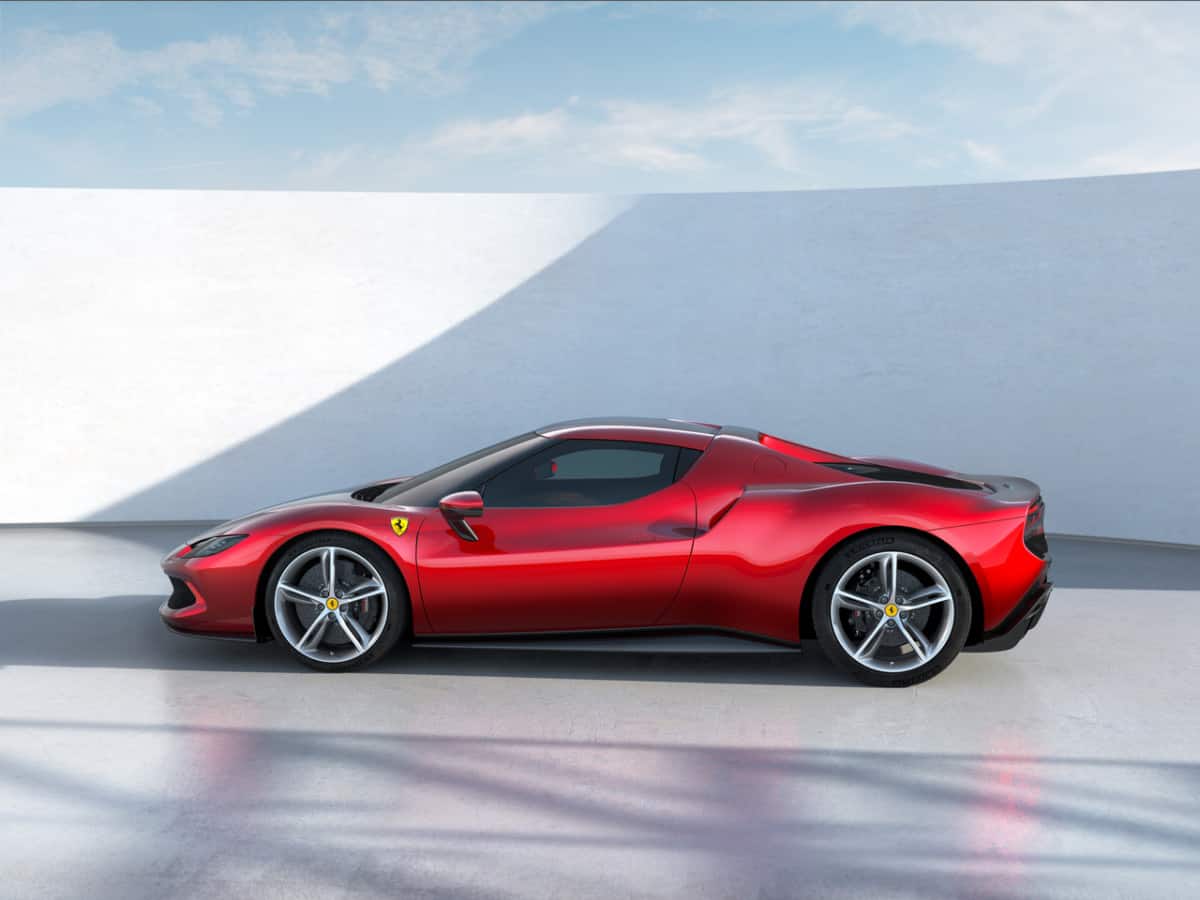
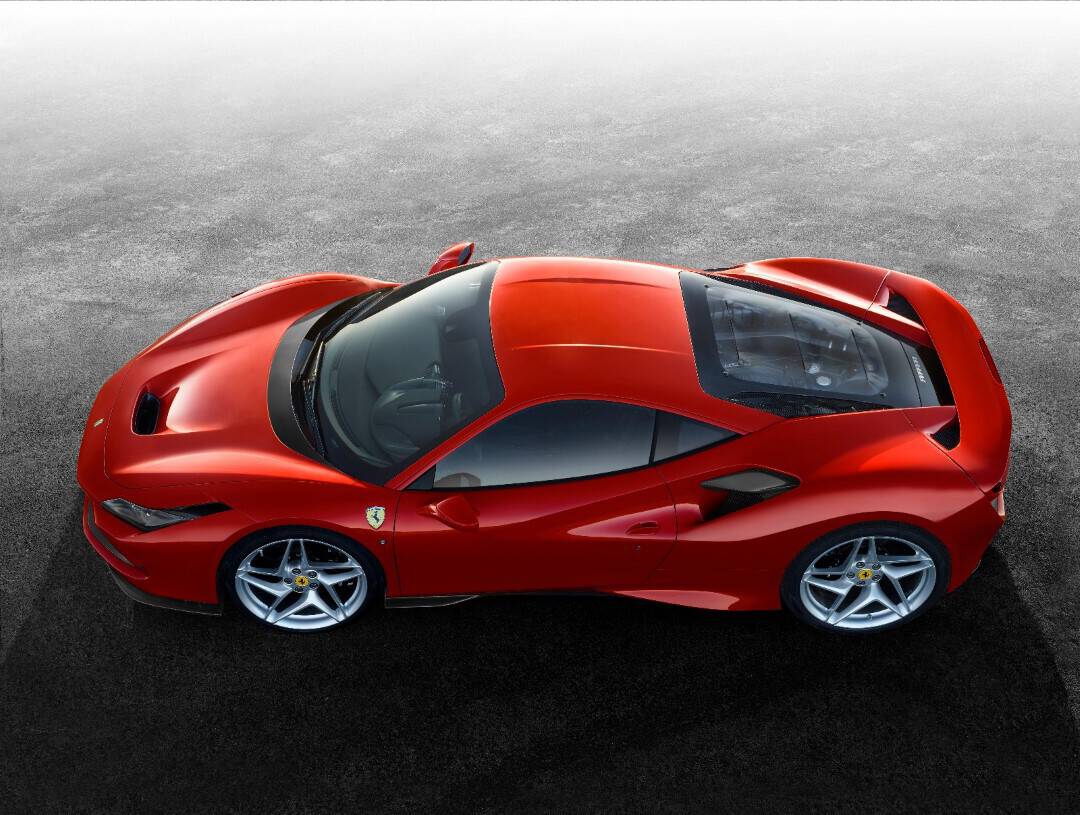
Performance
But the question remains, how does the Ferrari 296 GTB perform? We know that the car is more powerful but also heavier than the Ferrari F8 Tributo. Can this extra power be converted into better performance on the road and track?
Well, the numbers don’t lie, and while the F8 Tributo gets from a standstill to 100 km/h in 2.9 seconds. The 296 GTB manages it in the same time. You might say all that extra power is wasted if the car is no faster.
But that’s not the whole story. 0-200 km/h is 7.8 seconds for the F8 Tributo, while the Ferrari 296 GTB achieves it in 7.3 seconds. The faster you go, the quicker it gets!
But its not all gold medals for the Ferrari 296 GTB, as its top speed maxes out at 330 km/h (205 mph), while the Ferrari F8 Tributo goes on to 340 km/h (211 mph). I guess those extra two cylinders in the V8 are useful after all!
Handling
Straight line speeds are one thing, but how does it perform on a track? EVs like Tesla are great at straight-line speed, but the battery weight can leave the car tricky on corners.
One thing Ferrari has is 75 years of cornering know-how. How is this translated in the new Hybrid V6? Well, really there is only one statistic you need to check and it tells you everything you want to know.
Ferrari is fortunate to have its very own test tack opposite the factory called Fiorano. All road and F1 cars are tested on the track, and the setting of the track time is the only barometer worth checking. How do these cars compare?
The Ferrari F8 Tributo manages a Fiorano lap time of 1 min 22.5 sec while the Ferrari 296 GTB achieves the same lap of Fiorano in 1 min 21 sec. That’s bloody impressive and a huge achievement for Ferrari with a V6 hybrid drivetrain.
To put that time into perspective, the mighty Ferrari F40 manages it in 1 min 29.6 sec. That was a stripped-out car designed for the track, while the Ferrari F8 Tributo and Ferrari 296 GTB are cars you can take your kid to school in. Such is the pace of progress
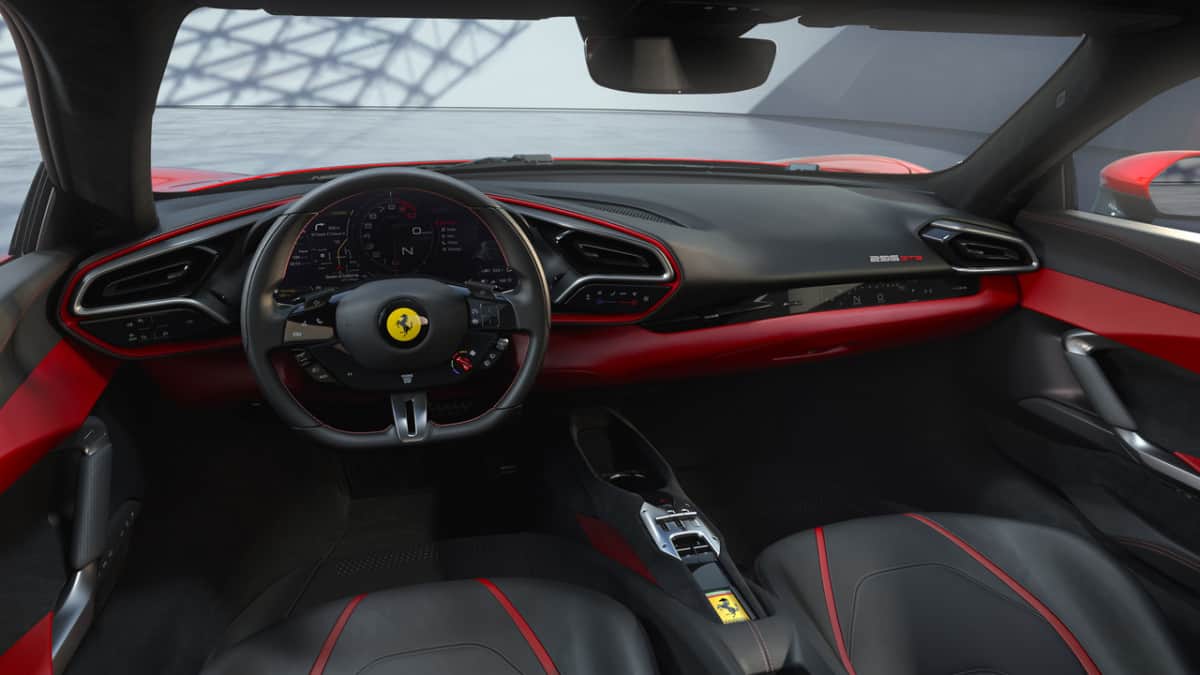
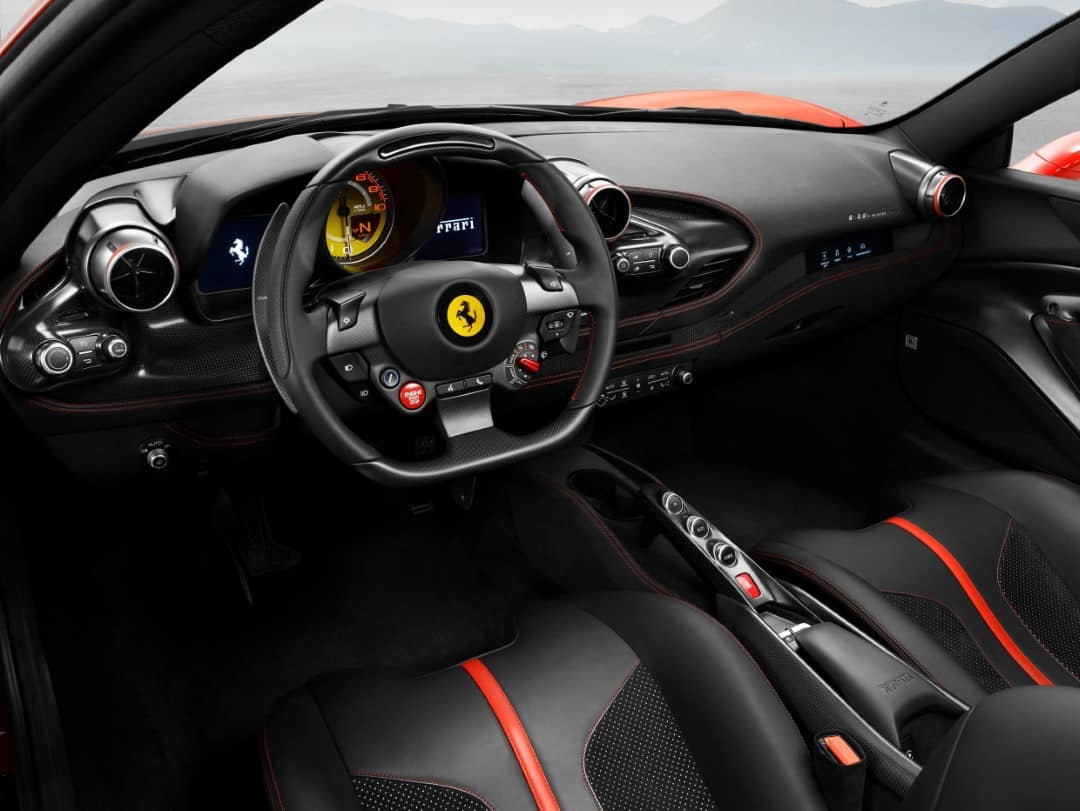
Interior
On paper, the two cars are very similar on the inside. Both are 2 seaters with the engine mounted behind the cabin. Space is therefore limited with minimal space behind the seats.
But in reality, the interiors are very different, where I would describe the Ferrari 296 GTB as digital while the Ferrari F8 Tributo is analogue. The dials and all buttons on the 296 GTB are digital, touch buttons, and screens, even down to the buttons on the steering wheel itself.
In contrast, the Ferrari F8 Tributo still feels traditional with a real moving tachometer in the centre of the instrument cluster. In my opinion, this works much better than the digital display of the 296 GTB.
Don’t get me wrong, there is nothing wrong with the digital display, but the moving dial will always win over a computer-generated one. I love watches and own an Apple Watch and a number of APs. I don’t care how good the digital watch is, one digital watch is more than enough. With APs or something similar you can build a collection of beautiful automatic watches.
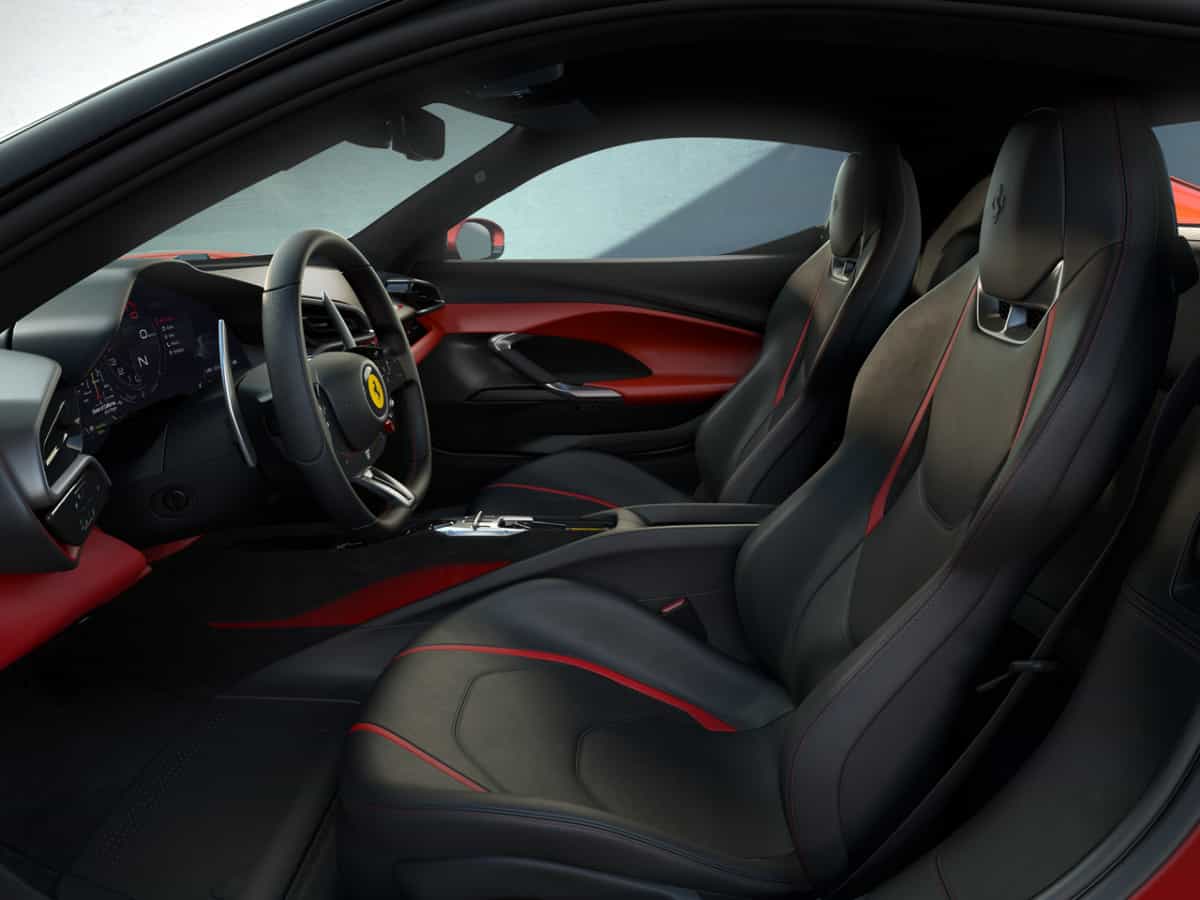
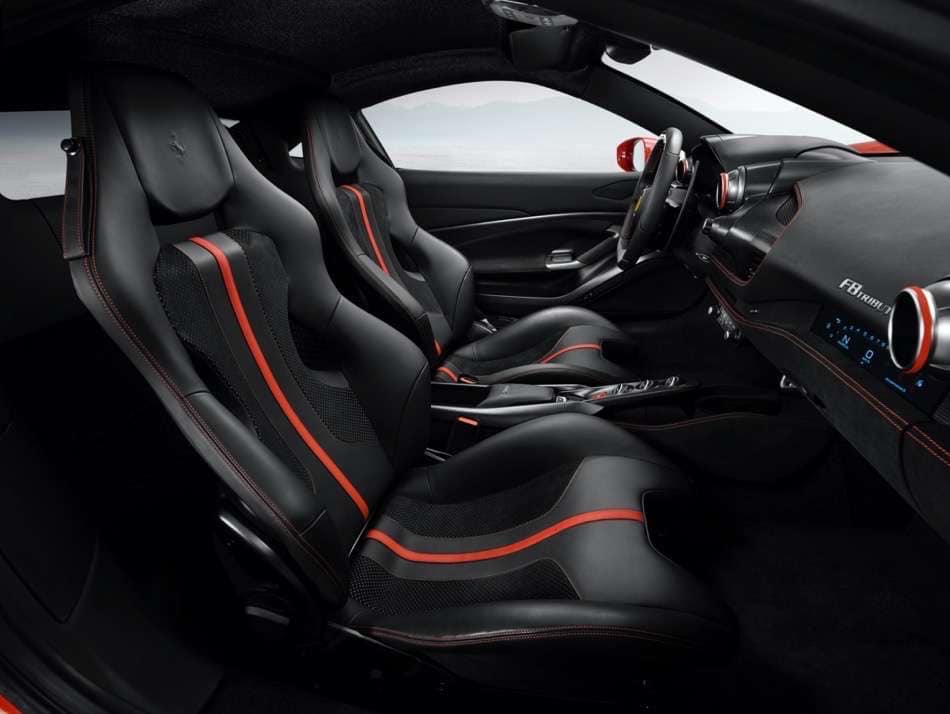
Practicality
The Ferrari F8 Tributo is slightly larger on the inside than the Ferrari 296 GTB, although it’s not massively different. Both have enough space up front for the weekend luggage and are big enough to be used for light daily use.
But I think the game changer for the Ferrari 296 GTB is the electric motor. Obviously, this will make a difference in fuel consumption, but the real difference is the ability to drive around town without attracting unwanted attention.
In the Ferrari 296 GTB, you can switch to full electric mode and glide along in silence, although the e-range is only 25km. Alternatively, you can run the car in hybrid mode to give a greater range, but for most people, 25 km is a daily commute.
Which would I choose?
You might be thinking right now with so much positivity about the Ferrari 296 GTB I would jump at that. But you would be wrong, and the car I would choose is the Ferrari F8 Tributo. Strange choice? Read on.
Firstly, I just want to say the Ferrari 296 GTB is outstanding. What Ferrari has managed to achieve is truly remarkable from a humble V6 with hybrid technology. You have to remember that Ferrari is a small-volume manufacturer, which makes it even more of an achievement.
But the reason why I would choose the Ferrari F8 Tributo is that it is the last of a line. The end of an era. Five years from now everything will be plug-in hybrid. This car is analogue in a digital world.
It reminds me of the Ferrari 458 Italia, the last of the naturally aspirated V8 engines. No turbos, just straight power. The Ferrari F8 Tributo will be the last of the non-hybrids. That’s why the F8 was a tribute. Class act.
The Ferrari 296 GTB Galleries
